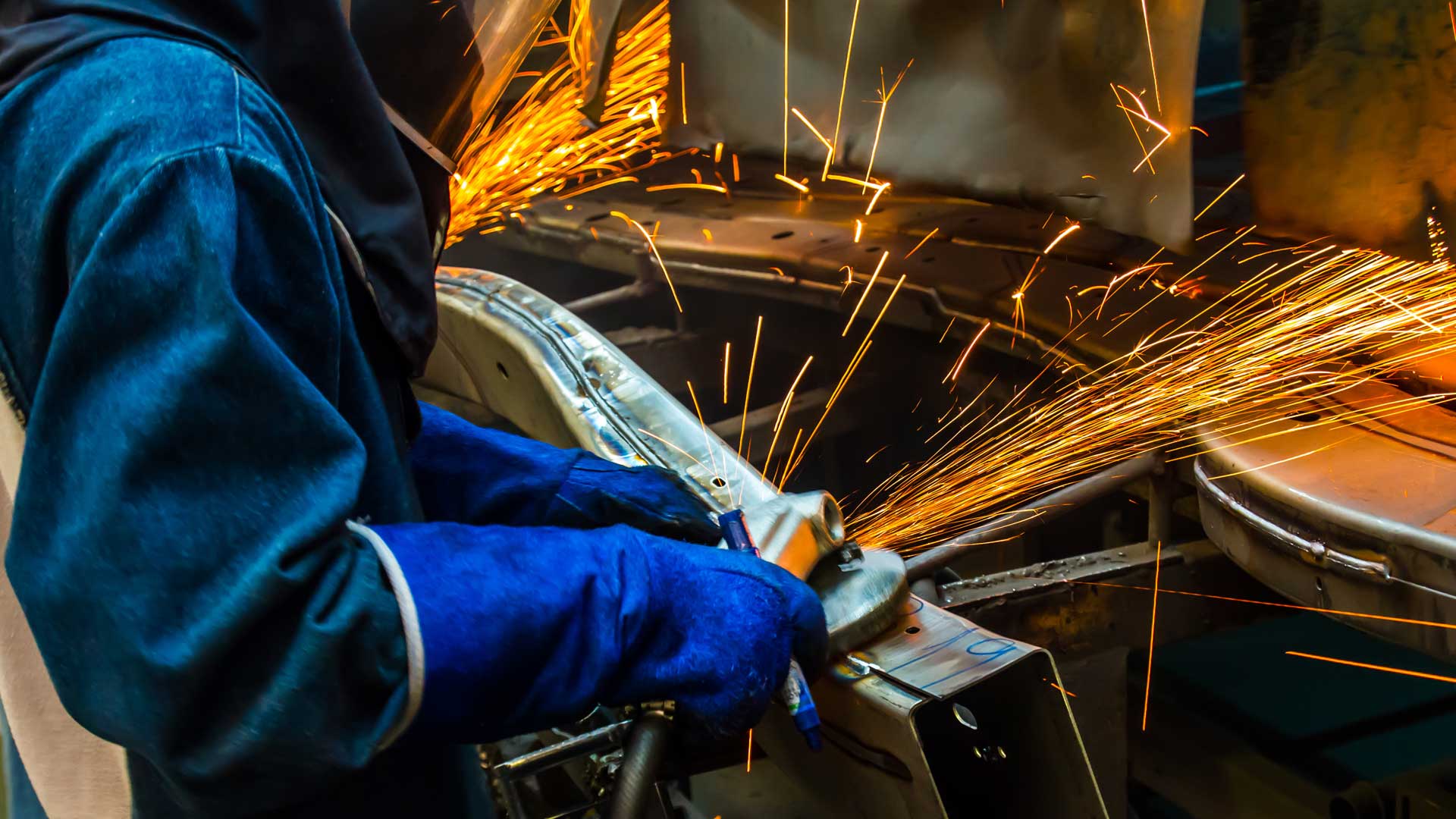Clean Air and the Automotive Industry

The automotive manufacturing industry employs more than 425,000 workers in the U.S. alone, most in the automotive parts manufacturing sector. Production workers in automotive manufacturing plants are exposed to a broad range of airborne toxins. The type of exposure depends on the materials and applications used. Here’s a closer look at some of the exposure risks associated with common manufacturing processes in the automotive industry.
Welding
Both manual and robotic welding are used extensively in the creation of parts for the automotive industry. The characteristics of smoke and fumes generated by the welding process can vary widely. The toxicity and the total volume of fumes generated depend on three variables:
- Type of welding process
- Base metal and filler metals used
- Composition of the welding rod/wire
Weld fumes can contain many toxic elements and compounds, including nickel, copper, vanadium, molybdenum, zinc and beryllium. These fumes are made up of tiny particles that are inhaled deeply into the lungs, where they have both immediate and long-term impacts on worker health. Acute affects of exposure to weld fumes can include shortness of breath and respiratory irritation; eye, nose or throat irritation; or nausea. Long-term exposure to hexavalent chromium (hex chrome), manganese and other elements can lead to chronic or deadly exposure effects.
- Hex chrome fumes are generated from elemental chrome found in welding consumables, typically when welding stainless steel or other chromium-containing alloys. Overexposure to hex chrome can cause asthma, eye irritation and damage, and even ear drum perforation. A known carcinogen, hex chrome is associated with elevated rates of several kinds of cancer.
- Manganese is found in virtually all types of welding wire as well as in many base materials. When it is heated, it reacts with oxygen in the air to form fumes that are both toxic and combustible. Chronic manganese exposure can cause neurological damage (called manganism) that mimics diseases like multiple sclerosis (MS), amyotrophic lateral sclerosis (ALS) or Parkinson’s disease.
- Overexposure to weld fumes can also cause a serious condition called “metal fume fever,” or welding sickness. Metal fume fever causes non-specific, flu-like symptoms such as fever, chills, nausea, headache, muscle or joint pain, shortness of breath and fatigue. With continued overexposure, the illness can progress to shock or convulsions, requiring immediate medical attention.
- Many automotive manufacturers are switching to aluminum for body parts, engine components and other pieces traditionally made of steel in an effort to reduce weight and improve fuel efficiency. Aluminum welding produces magnesium oxide and aluminum oxide, both of which cause respiratory irritation. The filler metals used for welding of aluminum components tend to be less dangerous than those used for welding steel, but breathing in aluminum fumes is still dangerous. Long-term overexposure is associated with neurological effects, including cognitive impairments, peripheral neuropathy and motor dysfunction.
Machining
Manufacturing engine blocks and other drive train components often involves machining of precision parts. Machining usually requires lubricants, which create fine oil mists that can be invisible to the eye. As the mists settle on surfaces, they can create slip and fall hazards for personnel. They also have health impacts when inhaled: depending on the size of the particulates and the chemistry of the lubricant, extended exposure may lead to asthma, chronic bronchitis, chronically impaired lung function, fibrosis of the lung and cancer. Metalworking fluids can also become contaminated with disease-causing pathogens.
Cutting and Grinding
Larger particulates from cutting and grinding don’t make their way as deeply into the lungs as the fumed particulates from welding, but the large volume of dust produced by these applications does present special health hazards. Fiberglass, metal, glass, plastics and epoxy resins can all cause respiratory irritation; some materials are also carcinogenic when inhaled. Newer materials used in the automotive industry, including carbon fiber and composites, are associated with skin and respiratory irritation, contact dermatitis, and chronic interstitial lung disease.
Plastic Processing
Molding cup holders, air conditioner vents, dashboards and other plastic components for the automotive industry creates its own set of health and safety challenges. Polymers and resins generate volatile organic compounds (VOCs) when heated during thermoplastic injection molding or other manufacturing processes. The toxicity of the emissions depends on the type of plastic being processed. PVC can produce hydrochloric acid gas, while acetyl plastics produce formaldehyde. Many of these chemicals are associated with long-term health risks—including respiratory problems, central nervous system effects, and cancer—and some present an immediate asphyxiation risk if not controlled. Workers may also be exposed to plastic dusts when handling raw materials, which may come in the form of powders or pellets.
Rubber Manufacturing
Rubber is used not only for tires, but also for wiper blades, engine mounts, seals, hoses, and belts. Like plastic manufacturing, rubber processing produces volatile emissions that can be toxic with overexposure. Breathing in fumes from rubber processing is associated with cancers of the bladder, stomach, and lungs, in addition to chronic respiratory problems, skin disorders and possibly even reproductive effects.
Read more about best practices in air quality management for the automotive industry.
Contact Us With Your Questions!
SUBSCRIBE TO
BLOG UPDATES









